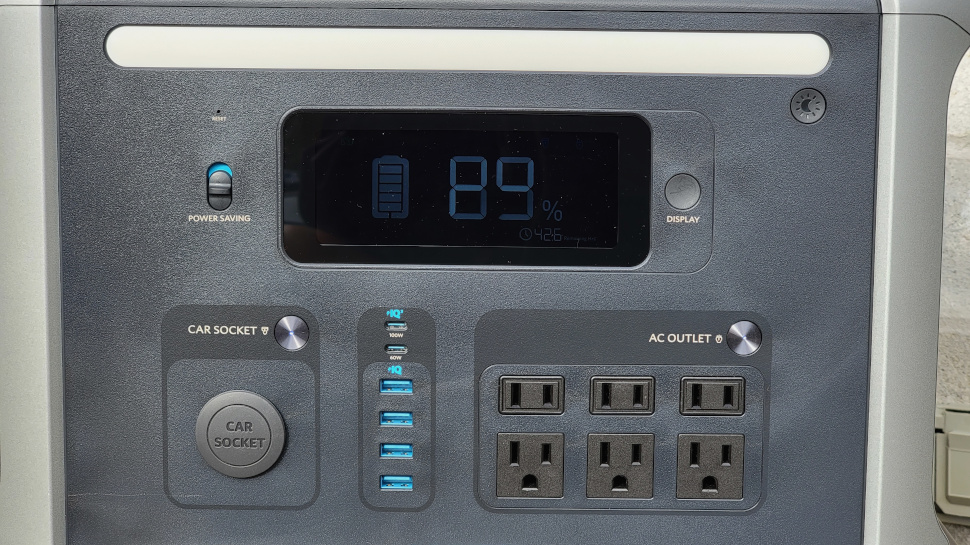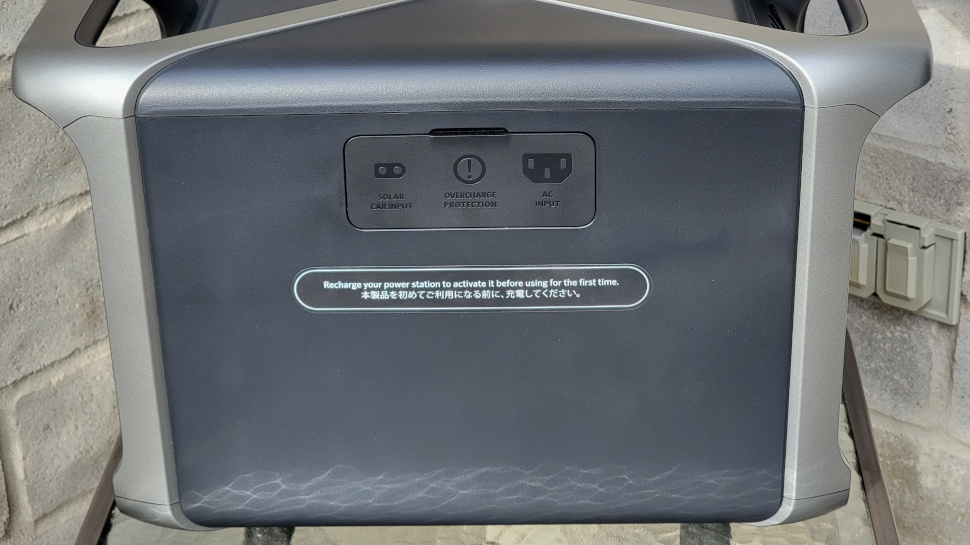Anker 757 Power Station
The Anker 757 is an easy-to-use portable power station that is powerful and versatile but surprisingly small. With a battery capacity of just under 1300Wh, it will run most home appliances for a couple of hours. Its 1500W AC inverter will provide plenty of juice to power even the most demanding tools, such as an electric drill.
Anker is known to make great battery products, and the 757 is no exception. Backed by a whopping five-year warranty, the unit is based on Lithium Iron Phosphate (LFP) chemistry, giving more than 3000 charge cycles over its lifetime. Anker is able to pack many outlets in a small volume while also providing essential features such as super-fast charging and a UPS mode.
Anker 757: Price and availability
The Anker 757 portable power station is available for $1399.99, which translates to about $1.14/Wh. As with other Anker products, the 757 costs slightly more than the competition but has better manufacturing quality. Anker also offers smaller power stations ranging from 256Wh capacity for $249.99 to 1024Wh at $999.99.

Anker 757: Design
Accessories included with the 757 are a dust-proof bag, charging cables, and a user manual. The compact unit has a big ‘X’ on the top, giving the impression of being an X-men prop. The solid plastic case has two large rubber feet to keep it stable and two molded handles on the sides. The top surface is flat and can accommodate devices while they are charging.
The station’s front panel features a bright segmented LCD, viewable from a few meters. It automatically turns off after thirty seconds and displays information such as the remaining percentage power, input and output power, and the station’s health status. The unit operates through push buttons that activate or deactivate various sockets. A slide switch enables the power-saving capability of the 757, turning off outputs that no longer use electricity after a while.
The input section at the back allows charging the station using a built-in adapter at up to 1000W. A push button next to it clears the input overload circuit when the input current exceeds the permitted level, while a 300W DC input socket enables charging through the carport or the supplied XT-60 solar charging cable.
The unit has three output sections, one AC and two DC, all protected against over-current. Six USB ports of up to 100W give plenty of options to charge power-hungry devices such as laptops, while a regulated 120W car charger can run smaller 12V appliances. The AC section, rated at a maximum of 1500W, differs from the competition by offering a combination of two and three prongs output sockets.
A multifunction light bar is provided whenever an emergency occurs on the road or at home during a blackout. A push button selects three light intensities while a long press sets it in SOS mode, blinking at different intervals.

Anker 757: In use
The Anker 757 offers a combination of features and power not seen in similar models. The battery chemistry is the more expensive and heavier LFP type, rated at over 3000 charge cycles, while the number of USB and AC sockets make it ideal in an office setting.
One feature that fits particularly well in an office is the UPS mode. Any disruption on the AC grid will cause the station to automatically switch from the primary AC input to the internal battery within 20ms. This is great for home computers and 3D printers, where a power cut can be catastrophic.
A large 7” LCD shows the user essential information about the station. Icons for power saving, abnormal temperature, and output frequency, among others, are all placed at the top. The middle of the screen holds battery capacity while the bottom gives real-time input and output power and the remaining charge in hours.
A reset button on the left of the display can clear most firmware glitches while operating the unit. The user can select the station’s AC output frequency to be either 50Hz or 60Hz by holding the AC push button for two seconds, allowing appliances from other countries to work without any issues. The 757 generates no noise while working in the UPS mode and produces about 47dB at a distance of one meter when the AC output is heavily loaded.

Anker 757: The competition
The market for affordable power stations has flourished partly due to a move towards greener technologies. A power station does not generate harmful emissions and is generally cheaper to maintain than a gas generator. The efficiency of the Anker 757 AC inverter is 92%, a number impossible to attain using a gas generator.
The Jackery Explorer 1500 is a 1800W, 1534Wh portable station similar to the Anker 757, featuring the same output sockets but which is more expensive by $300. The battery technology used in the Explorer 1500 provides only 500 charge cycles, a fraction of what’s offered by the 757. In addition, the AC inverter efficiency is 85% for the Jackery compared to 92% for the Anker, resulting in energy wasted as heat.
Anker 757: Final verdict
The Anker 757 is a compact power station that can be carried around effortlessly. It is particularly suited for an office setting with an extensive array of output sockets and a built-in UPS mode. Based on the latest LFP battery technology, the 757 represents an excellent investment that will outlast its five-year warranty.
At $1.14/Wh, the Anker 757 is more expensive than one would expect for a similarly rated power station, while the 1500W maximum output is a bit on the low end and should be 3000W or double the nominal amount. The 757 remains a great power station capable of powering all office equipment.
0 comments:
Post a Comment